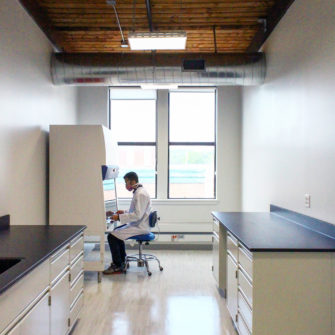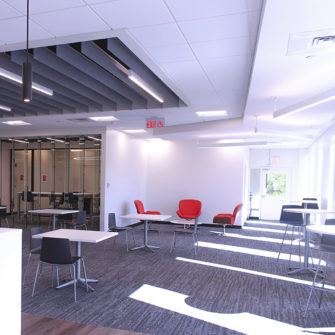In our practice, we’ve seen a healthy demand for test-fitting laboratory designs into new and existing buildings. In this article, we will describe how our use of BIM allows for powerful graphics and extractable information to benefit landlords, tenants, institutions and builders alike in unexpected and exciting ways.
Test-fits are an important part of the early phases of projects and can be used to jump-start stalled deals or to enable reuse of “obsolete” or problematic facilities. As designers, we enjoy the process of envisioning clear and rational layouts in difficult geometries and are thrilled when our work allows the clients we serve to move forward with confidence and enthusiasm.
Let us first distinguish between traditional test-fits and our new approach that takes full advantage of BIM, specifically Revit software. With traditional 2-D CAD software, design firms have limited ability to modify layouts and to extract information accurately and swiftly. These limitations stem primarily from the relative brittleness of the process, which is polyline-based for color and area. With this method, polylines need to be laboriously traced around room geometries and re-checked as layouts change. The software does not allow for the area information created by polylines to be easily extracted and analyzed. This may explain the real and perceived groans that many clients hear from architects when they ask for quick turnaround test fits!
We’ve recognized, through experience, that what clients really want is the ability to quickly analyze and make changes to test fits. They may need to see graphically and numerically the impact of layout revisions to critical ratios (such as lab: office, wet: dry, net: gross, department: division or tenant: landlord). Often they don’t have time to wait for their architects to retrace polylines and re-layer their CAD files.
Because of this demand for speed, agility and accuracy, we’ve fully embraced BIM and Revit as our tool of choice for test-fits. As my partner Stephanie Goldberg says, “A powerful test-fit begins with a strong BIM template. We’ve structured ours to anticipate the various needs and requests of our clients and set it up so we can meet their demands with seemingly little effort or need for advance notice.” Instead of polylines, Revit works with room definitions with limitless capacity to be assigned attributes that can be graphically depicted with color legends in plan view.
This is an excerpt from an article written by Mark Reed for High-Profile. Read the full article »

